BOOM! The Bang behind the bomb, and how to stop it
Things get a little dangerous as we don our body armour and head out into the battlefield. How do explosives work and what can we do to protect against them? We take a sneak peek at AnUBIS, a device that uses donated human body parts to help to understand the injuries an explosion can cause, and we investigate bomb-proof materials that could also be used in sports. Plus, in the news, why antibiotics at an early age might make you fat, the comet with a cave inside, and why you shouldn't marry your cousin...
In this episode
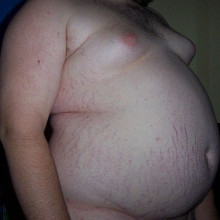
00:54 - Are antibiotics causing child obesity?
Are antibiotics causing child obesity?
with Martin Blaser, NYU Langone Medical Centre,
Millions of doses of antibiotics are administered every day, particularly to young children. While their life-saving benefits speak for themselves, could there be a downside to antibiotic exposure in early life? A new study on young mice suggests that use of the drugs might be making children more likely to become obese and causing lifelong changes to metabolism, as Martin Blaser, from NYU Langone Medical Centre, explains to Chris Smith...
Martin - I realised that farmers give antibiotics to their farm animals to improve their growth. And about 10 years ago, a light bulb went off and I thought, maybe this is what we are doing to our children. We are causing them to grow more too. So, in recent years, we have done studies in mice where we've given the mice doses of antibiotics at the levels that farmers give. These are low doses given every day in their drinking water and we found that the mice become fat. When we put them on a high fat diet, they become fat. When we put them on antibiotics they become fat. When we put them on both together, they become very fat. But human children aren't getting low doses of antibiotics every day. They're getting pulses of antibiotics to treat their ear infections and their throat infections. So now, we've developed a new model which we called PAT for Pulsed Antibiotic Treatment so that we're mimicking the kind of exposures that children get.
Chris - And you're asking, does this pulsed administration of antibiotics which is more similar to what we do in real life, does that also translate into subsequent changes in growth, including obesity?
Martin - Yes, so we're asking whether these pulsed doses of antibiotics mimicking the kinds of doses that kids get, will they change metabolism, will they change the development of the mice, and will they affect the microbes that are living in the mice?
Chris - What happens?
Martin - Well, not surprisingly, the antibiotic administration affected the populations of microbes in their body and this is what's called the microbiome. The antibiotics changed their diversity, how many different kinds there were, and they changed the composition of the community so that the mice had different kinds of communities when they were on antibiotics. Importantly, the effects lasted way beyond when the antibiotics were stopped. In some cases, they continued into when mice are in middle age even though this was given to mice during their childhood period.
Chris - What effects were there on the mouse metabolism and growth, and other important things that we were aiming to find out what would happen in children?
Martin - We found that the antibiotics had effects on their metabolism. Here, we used two different antibiotics - amoxicillin, the most widely used antibiotic in childhood and a macrolide antibiotic, that's the second most widely used antibiotic. And they differed a little in their effect. The mice on the amoxicillin developed bigger bones. The mice on the macrolide, they developed more fat.
Chris - Can you explain why giving antibiotics should affect the composition and growth of bone in one case and becoming more fat in the other case?
Martin - Well, we're not entirely sure what accounts for the differences in responses to the antibiotics. Although in our past studies, we've seen effects both on fat and on bone. And so actually, that's an area that we're currently working on to understand the intermediate mechanisms that account for this.
Chris - But the fact that the effects were lifelong is really quite worrying because that's saying that if you administer antibiotics as we commonly do to many, many children when they're little, you are potentially distorting or bending the composition of the bugs that live on them and in them, and that will have metabolic consequences that could last their lifetime.
Martin - Yes. In our earlier paper, we showed that if we gave antibiotics and we perturb the microbes even for a short period of time, there could be lifelong metabolic effects even when the microbes went back to their usual compositions. So, we are concerned about this and in a sense, we are recapitulating what the farmers had been showing for decades. They showed, the earlier you start antibiotics, the bigger the effect of growth. We're finding that too.
Chris - Doctors are not going to take away from this, the message, "Don't give children antibiotics" because in many instances, antibiotics can be absolutely critical in a life-threatening situation. But what could we do to mitigate these effects then?
Martin - Well, your point is really good. Antibiotics are necessary drugs. They have saved countless numbers of lives and in no way am I saying, "We should abandon antibiotics." We just need to use them more judiciously.
Chris - Extrapolating your findings albeit in mice, to young kids, are we therefore presupposing that some of the growing trend in overweight amongst youngsters could be attributable to overuse of antibiotics?
Martin - Our study was a study of mice. It's our third study in mice, all showing that early life antibiotics are changing development, increasing body mass And there now have been several epidemiologic studies, studies of groups of children, the Avon longitudinal study that we participated in, showing that kids exposed to early life antibiotics had increased markers of obesity or adiposity, or fattiness at the age of 7. So, there's a growing body of data in children as well that antibiotics have cost in terms of obesity. There are studies about antibiotics and asthma, and food allergies, and coeliac disease. So, we're coming to realise that antibiotics have great benefits but they also have some potential costs.

07:09 - The Royal Society summer exhibition 2015
The Royal Society summer exhibition 2015
with Patrick Naylor, Matthew Morris and Phillip Murgatroyd
Every summer, the Royal Society in London comes alive with a week-long exhibition showcasing the very latest in cutting edge science from around the UK. This year is no exception, with exhibits and events covering everything from nanotechnology to cosmic rays, cancer screening, and fighting the flu. Kat Arney went along to talk to a few of the researchers presenting their work...
Philip - Hi. I'm Philip Murgatroyd. I'm from the University of Birmingham and I'm part of the Stonehenge Hidden Landscapes project.
Kat - There's a wonderful exhibition here. We've got a tray of sand. There's an enormous flat iPad-looking thing, very bizarre piece of machinery, the gravity imager, and it's all done up as an underground station. What is this about?
Philip - The basic theme of the display Stonehenge underground because it's developing from work that we've done using archaeological geophysics in the Stonehenge Landscape and its modern scientific techniques have allowed us to completely revolutionise how we see the Stonehenge Landscape.
Kat - I have to ask, what on earth is a gravity imager? That looks a very impressive piece of scientific kit, but what does it do?
Philip - It's part of the future of geophysics and we're working with the GG-TOP project at Birmingham and they're developing a new way to detect gravity by using an atom interferometer. Basically, this catches a cloud of atoms in a vacuum and throws them in the air and sees how they go up in the air and come down using laser interferometry. Because we're detecting the effects of gravity on very small atoms, we can detect very small influences of gravity so we can detect smaller objects based on the gravity than we're ever able to before.
Kat - So, that's letting you see what's underground, what's in the ground.
Philip - Yes. The whole reason we use different types of geophysics is, there are different things you can see with different types of geophysics. Currently, gravity detection is quite poor for archaeological deposits but that's because the sensors aren't fine enough. By developing our own sensor, we hope to be able to introduce gravity into the whole suite of geophysics.
Kat - Tell me one of the most interesting things you found under Stonehenge using this kind of technology.
Philip - Stonehenge has actually been very well surveyed because it's relatively small area. What we've done in conjuction with the Ludwig Boltzmann Institute in Austria is they've developed a suite of technologies that allow us to collect geophysical data pulled behind quadbikes at 70 miles an hour. This allows us to, not just focus on areas where we think there are stuff, but focus on the whole landscape within 12 hectares of magnetometry and that allows us to see everything. We can see the spaces where we assumed were spaces between monuments and we found that they're not spaces at all. There are monuments there and we just never looked further because we've never had the technology to do so.
Kat - So, there's a whole world that's underground that's being revealed by new technology.
Philip - Yes, absolutely. It's an entire landscape that we've not been able to look at geophysically before, that now we can and it's opened us a whole array of different monuments.
Matthew - Hi. My name is Matthew Morris. I work for University of Leicester and we're here, explaining how we were able to identify Richard III's remains.
Kat - Now, there's a huge glass case here with a skeleton in it. Is this the man himself?
Matthew - It's a copy of the man himself. So, we reburied the real king in Leicester and this is an exact 3D printed copy of his skeleton that we made from the CT scans we made of the real bones. We then created models that we then printed out using the 3D printer.
Kat - So Richard III was very famously found in this car park in Leicester. What can people see here to help explain and understand how you went about identifying whether it was our missing king or not?
Matthew - So, we got the skeleton himself. We're explaining how we were able to put all the evidence together to make the case. So, it's like a 500-year missing person's case, mystery case, and we're putting it together. We've got activities about statistics and probabilities. We've got an arrow drop, we've got a medieval knight so we can show people how the injuries were inflicted on the skeleton that we've got.
Kat - There has been some discussion about whether it really is Richard III. How do we know that it definitely is?
Matthew - So that's why we're here to show people how. So, you can't prove it's Richard III from one strand of evidence, but when you take all of the strands of evidence together from all the aspects of the investigation, you come up with a probability of 99.999 per cent likely that this skeleton was Richard III. And so, that's what we're here, hoping to convince everybody.
Kat - So, what's this arrow drop? It looks a bit like a guillotine. Can we wind it up and have a go?
Matthew - We can.
Kat - Alright. Let's give it a go.
Patrick - So, I'm Patrick Naylor. I'm at Imperial College London and we're working on 3D sound and soundscapes, particularly focusing on how do humans understand sound, and what can we learn from that to help us design machines that understand sound better than they do now. In here, we have the opportunity to talk to our robot. Hello...
Robot - Hello. It's nice to meet you.
Patrick - This is a 50-centimetre high robot that is running a number of processing algorithms. First of all, it's doing face detection and it's also working out the direction that sound is coming from. It's following that by head tracking.
Kat - He's a charming little chap. I feel like I want to wave at him. He's white with some nice orange styling, tipping his head towards me. What's going on here?
Patrick - The sound is being picked up by the microphones on the head and from these two signals, from the two microphones, the robot works out the direction that the sound is coming from. From the cameras, it works out the position of faces using face detection algorithms. The robot tries to pay attention in particular to directions that have sound coming from them and also, a face is detected. So, faces that talk are important to the robot because that's where its instructions will come from.
Kat - What would be a kind of application of this? How could kind of technology be useful? Hello. It's looking at me while I'm talking.
Patrick - It's all about human-robot interaction. So, any robot interaction involving humans, it's likely that speech is going to be important. In real world environments, robots have to deal with multiple humans in the same room, a typical application which is quoted as a welcoming robot for a hotel. You walk up to the check-in desk and instead of having to queue up in line to check into your hotel, the robot might simply welcome you and give you your check-in details and your room key. Now, the important thing there is that there are many other people checking in at the same time. Which person should the robot pay attention to? So, this selective attention - we call it selective attention. It's an important capability that robots need to be taught or we need to develop algorithms that can deal with that. Goodbye!
Robot - It was nice to talk to you. Have fun at the exhibition!

14:25 - The comet with a cave inside
The comet with a cave inside
with Colin Snodgrass, Open University
In August 2014 after 10 years in space, the European Space Agency's Rosetta probe successfully rendezvoused with  comet 67P-Churyumov-Gerasimenko. This duck-shaped ball of ice and dust is hurtling along at nearly 120,000 kilometres per hour towards the inner Solar System where we are. Rosetta is keeping pace with it and using its on-board instruments to observe the core or nucleus of the comet as it warms up during its approach to the Sun. One observation that's caught the eye of the mission scientists are some bizarre circular pits peppered in small clusters across the comet's surface, each about 200 meters across. These could suggest that the comet contains caves, as Colin Snodgrass, a comet specialist with the Open University, explained to Chris Smith...
comet 67P-Churyumov-Gerasimenko. This duck-shaped ball of ice and dust is hurtling along at nearly 120,000 kilometres per hour towards the inner Solar System where we are. Rosetta is keeping pace with it and using its on-board instruments to observe the core or nucleus of the comet as it warms up during its approach to the Sun. One observation that's caught the eye of the mission scientists are some bizarre circular pits peppered in small clusters across the comet's surface, each about 200 meters across. These could suggest that the comet contains caves, as Colin Snodgrass, a comet specialist with the Open University, explained to Chris Smith...
Colin - It's a very strange shaped comet. It's got two parts and early on, it was kind of described as this rubber duck shape with a head and a body. This is still useful to think about because it naturally lets you imagine the shape. The particular thing we're looking at here is on kind of the back of the duck. There are these large pits up to a couple of hundred meters across. These are sort of stretched. They don't look like craters that you find on the moon or on asteroids. They're holes that seem to go into the inside of the comet.
Chris - How big is the comet itself?
Colin - The comet is about 4 kilometres across. So, the actual solid body of it is pretty small when you consider that comets that we see in the sky actually, they're what we call the coma and the tail, the sort of thin atmosphere stretches over tens of thousands to millions of kilometres. But it all comes from a very small, central, icy body that's only the sort of size of a small town.
Chris - Where do comets originate from in the first place?
Colin - A comet like this one we think comes from a region of our Solar System called the Kuiper belt which is the area of the Solar System where Pluto is. It's out in the outer observable edge of the system. It makes them very interesting because bodies that have been out there have kind of been in deep freeze since the time that the planets formed. So, what we're looking at is we're looking for a little remnant from the time of formation of the planets, the left over building block if you want.
Chris - And how does this comet happen to be coming past us only now, given that it dates from way back 4.5 billion years ago when the Solar System formed?
Colin - Comets like Churyumov-Gerasimenko actually are only in the inner Solar System for relatively short time on the age of the Solar System so maybe a few tens of thousands of years. What happens is that somewhere in the outer Solar System around Pluto, a body like this comes close to some larger objects for example. The gravitation effect of one of the larger bodies out there like Pluto slingshots small bodies in towards the inner Solar System and eventually, they come in and then get into these orbits that take them closer to the sun. As they get close to the sun, their ice starts to evaporate away and produce the tails that make them look like a comet as we know them.
Chris - Do you think that the same process could also explain these interesting pits?
Colin - That was one of the first possible explanations people looked at so all we know, the material comes from a comet. Maybe these are just eroded away and we see that some of the activity of the comet comes from these pits. But the paper shows that if you do calculations, they can't just form by this way because the time that the comet is in the area nearest - in the inner Solar System - isn't long enough to have dug all of these pits. So, the paper goes on to describe, they must have formed by collapse of material into the inside. So the idea is that these are sinkholes, that there are some spaces, a cave or a void, inside the comet itself. Then what the activity does is it kind of weakens the surface enough until one of these collapses in to form these holes.
Chris - Do we have a stronger idea yet as to what this comet is made of and even, has anyone tried to weigh it so that we can begin to establish what might be in there or what might not be in there to make these voids for them to be able to tumble into.
Colin - We have some ideas about this because Rosetta has been making measurements on the surface and these pits are actually quite interesting because if you look at the walls of the pits, you see what were referred to as these 'goosebumps' or another phrase that was used was 'dinosaur eggs' which are these sort of balls a few meters across that make up the wall of the cliff. So possibly, this pit that's collapsed is allowing you to see that kind of building blocks inside. In terms of weighing the comet, yes, we have been able to do that because we could measure the deflection of the spacecraft when it first arrived, caused by the gravity of the comet. So, we know that its overall density is actually much lower than ice.
Chris - So, that would fit with the idea that there may be cavities inside into which material could tumble and make these pits.
Colin - Yes. It definitely helps to explain it if we have these cavities inside, sort of like a Swiss cheese type model of the comet.

20:08 - Low genetic diversity leads to low IQ
Low genetic diversity leads to low IQ
with Dr Peter Joshi, University of Edinburgh
Most animals, including humans, take steps to find a mating partner that is as genetically different from themselves as possible. And in our case that's with good reason, because scientists have now discovered that people who inherit the same versions of certain genes from their mum AND their dad, which is what can happen if you marry a close relative like your cousin, are likely to be shorter and do less well at school than those who get different versions from each parent. To find out more, Kat Arney spoke to University of Edinburgh researcher Peter Joshi, who was part of the study team.
And in our case that's with good reason, because scientists have now discovered that people who inherit the same versions of certain genes from their mum AND their dad, which is what can happen if you marry a close relative like your cousin, are likely to be shorter and do less well at school than those who get different versions from each parent. To find out more, Kat Arney spoke to University of Edinburgh researcher Peter Joshi, who was part of the study team.
Peter - What we're doing is using modern genomic techniques to measure genetic diversity. And The way that we're doing that is that we're using 350,000 people in total. To make sure that the study is very robust, we used 100 different populations across the world with all of that information and then collating it centrally in Edinburgh, we basically looked and measured the genetic diversity of each of those individuals.
Kat - So, you've got hundreds of thousands of people from populations across the world. How are you analysing their genomes? What are you looking at?
Peter - What we do is we look at the genetic diversity of individual people within that population and compare them with other people within the population. And At the same time, we look at their cognitive ability, height or blood pressure and within that population, see whether or not there's an association between genetic diversity and say, educational attainment. Having done that, we then combine all the results of the different studies to see whether or not the effect is robust and reliable across lots of populations.
Kat - So, when you started looking at the levels of diversity about whether people have two copies of gene or two different copies of a gene, what did you start to find?
Peter - We're looking at the whole of the genetic code of each individual and we're scanning along that genetic code and checking what proportion of that genetic code is identical from the mother and the father. What we typically find is that about 0.1 per cent of the genetic code is inherited identical from the mother and the father. But that number varies from individual to individual. With some people, it might be none at all and in some other people, it might be 3 or 4 times that. What we find is that if you've inherited 2 or 3, 3 or 4 times the norm in terms of lack of diversity that reduces educational attainment, cognitive ability and height.
Kat - So people who've got more similar genes from their parents, they don't do as well at school and they're shorter?
Peter - Yes, but it's also important to recognise that these effects are small. But on an individual level, it wouldn't be measurable. That's why we needed 350,000 people to robustly demonstrate that it was a real effect. The mechanism that we think might be involved is that there will be things associated with development that might underpin growth and therefore your height. And so, it's not height itself in a way that is being controlled in this way but it's the underlying biological systems and two bad copies might affect height in that way up and cognitive ability. If that happens, if these traits are favoured by evolution then we see this overall effect whereas for traits that are not subject to evolutionary pressures, we don't see that in quite the same way. It's speculation and one of the things we want to look at in the next stage of our study but it's to understand perhaps what's going on in more detail in terms of inheriting two identical copies of a defective gene.

23:58 - Women redden around ovulation
Women redden around ovulation
with Dr Hannah Rowland, University of Cambridge
 It's not just embarrassment or blushing that makes a lady redden: women also become subtly redder when they are ovulating, a new study has shown. Hannah Rowland told Chris Smith how she went about making this discovery.
It's not just embarrassment or blushing that makes a lady redden: women also become subtly redder when they are ovulating, a new study has shown. Hannah Rowland told Chris Smith how she went about making this discovery.
Hannah - About 10 years ago, somebody did some research on whether women changed in attractiveness across their ovulatory cycle so, their reproductive cycle. He found that when women were ovulating, so when they were the most fertile, they were rated by male participants as more attractive. And so, over the last 10 years, more and more research has come out, showing that women's behaviour changes, their voices change, their odour changes, so they smell differently and they're always more attractive when they're fertile. But in those 10 years, nobody has really got to the crux of why women are more attractive. And so, we hypothesised that perhaps it was explainable by changes in skin colour. So, chimpanzees and mandrels and other primates, when they're fertile, they have really obvious and conspicuous changes. So they get red bottoms and macaques get red faces. So, we hypothesised that perhaps women also had redder, more attractive faces.
Chris - It's like a sexual traffic light then although in this case, red doesn't mean stop. It means go.
Hannah - Absolutely. So, red is a very attractive colour to us and to other non-human primates.
Chris - Actually, I've got a big red end on my microphone so I wonder what that says about me. How did you do this study?
Hannah - We had two undergraduate students who were all data collectors and they recruited their friends to come and have their photograph taken. So, they came every weekday and we asked them personal questions about their fertility cycle and we also asked them to use an ovulation test kit, so that they could detect the hormones that signal when they're ovulating.
Chris - What was the outcome apart from taking these pictures?
Hannah - So, we designed a programme to detect cheek patches and measured the red, green and blue colour of the photograph. So, we then converted the red, green, and blue using models from psychologists of how the human eye responds to colour. We modelled how it would be perceived, how these cheek patches would be perceived by the human eye.
Chris - Can my eye tell when you're ovulating?
Hannah - Really interestingly, we found that women do get redder when they ovulate but it's just below the level detectable by the human eye.
Chris - Did you ask any real humans?
Hannah - No. That's the next step.
Chris - Doctors talk about a phenomenon called chloasma, which is when women have a high oestrogen state and they classically develop this during pregnancy but also, when they're using the oral contraceptive pill because oestrogen does change blood flow through the skin. Is this just because when a person is normally cycling, the oestrogen changes are just a little bit less than they would be in something like pregnancy. So it's there, it's just too subtle for us to see.
Hannah - You're right. Oestrogen is implicated in skin colour, but also, women with higher oestrogen levels have paler skin. Pale skin is very attractive in other studies. So actually, when we predicted that skin colour would be the causation of this attractiveness, we thought it would be tied to oestrogen. But when we map our colour change across the cycle so it goes very low, it drops significantly during menses and then rises rapidly towards ovulation and then stays high, when you map that onto the textbook oestrogen cycle, it doesn't map very well.
So, oestrogen peaks ovulation but it drops again just before menses, but our change in red actually maps basal body temperature much better. So, there's probably a combination of mechanisms causing this subtle change in redness.
Chris - If it's not detectable by the average male, then what's the point of it?
Hannah - Humans are sexually active across the month, across the year whereas other primates are only receptive and only mate when they are fertile. And so, there's a benefit to concealing ovulation in humans because it means that men are more likely to stick around and care for any offspring rather than, like you see in chimps, where males are only interested in receptive females and then go off and are more interested in the next receptive female. So, I think ovulation is concealed in women, but there are these little bits of information - voices, odour, behaviour - leaking this information.

29:02 - What is an explosive?
What is an explosive?
with Professor Chris Bishop, Microsoft Research
Explosives are capable of causing catastrophic damage. But how do they actually work,  and what's the difference between the gunpowder that the Chinese invented and more modern "high explosives"? Ginny Smith went to meet Chris Bishop, from Microsoft Research, to explode some explosive myths and find out how these chemicals do what they do...
and what's the difference between the gunpowder that the Chinese invented and more modern "high explosives"? Ginny Smith went to meet Chris Bishop, from Microsoft Research, to explode some explosive myths and find out how these chemicals do what they do...
Chris - It's a substance that's either a solid or sometimes a liquid which can undergo a chemical reaction and can turn into a gas extremely quickly. The gas occupies a volume about a thousand times greater than the solid or liquid and so it wants to expand very rapidly.
Ginny - So, all the different kinds of explosive work on that same kind of basic principle?
Chris - That's right. But the precise way in which that works can be very different for different kinds of explosives.
Ginny - Can you give me some examples?
Chris - Well, the place to start I think is with the very first explosive which is gunpowder - a mixture of charcoal and sulphur, and saltpetre.
Ginny - And what do those three things react together to do?
Chris - Well, the charcoal is a fuel just like the charcoal on your barbecue. It can react with oxygen to produce carbon dioxide and that releases a lot of energy. The oxygen though doesn't come from the air. In the case of gunpowder, it comes from the potassium nitrate. The potassium nitrate, we call it an oxidiser. When it undergoes this chemical reaction, the oxygen is released and combines with the carbon, the charcoal, and that produces energy.
Ginny - So effectively, because the oxidiser is in the mixture, your fuel doesn't have to mix with air in order to burn like a candle say, does?
Chris - That's exactly right. In fact, the burning process is much more rapid. We give it a special name. We call it deflagration but it just means burning essentially.
Ginny - Do you have any examples of this that we could have a look at?
Chris - Well, we've got some modern gunpowder here.
Ginny - It looks a bit like you've taken a pencil lead and kind of smashed it up a bit so you've got little pieces of that pencil lead. You've got quite an impressive looking blowtorch there. Are you going to use that to set fire to the gunpowder?
Chris - I am, but I'll just use a very, very small flame.
Ginny - Well, that was quite pretty. We got a sort of oomph and a bit of flame going up into the air.
Chris - So, that's what we call a low explosive. So, it burned quite quickly, just in a fraction of a second because that's very good quality gunpowder. There was certainly no bang. To get a low explosive to produce an explosion, it needs to be confined so it needs to be trapped inside some sort of container. So, if you think about a firework, it will be in something like a cardboard tube. You have a few grams of gunpowder inside the cardboard tube. When the gunpowder is ignited, it undergoes this chemical reaction that produces lots of gas, but the gas is now trapped inside that tube. And so, the pressure builds up until the point where the tube bursts and that's when we get the bang.
Ginny - So, that's a low explosive. High explosives sound a bit more exciting.
Chris - So, high explosives are very different in terms of their physics and often in terms of the chemistry. High explosives really were discovered in the middle of the 19th century. An Italian Chemist, Ascanio Sobrero was experimenting with taking various organic compounds and treating them with nitric acid. One day, he tried glycerine. When he treated this with nitric acid, he obtained nitro-glycerine. So, it was a different chemical compound. It has very different properties.
Ginny - How does nitro-glycerine explode?
Chris - In nitro-glycerine, instead of having this fine powdered mixture of a fuel and oxidiser, the oxidiser effectively is combined into the same molecule. So the molecule has a carbon backbone, three carbon atoms in a row and then attached to those are nitro groups. That's nitrogen and oxygen groups. And so, the oxygen combines with the carbon within the same molecule. So, it's a much more intimate mixture than even the world's best gunpowder because these are mixed at the molecular level. The nitrogen-nitrogen bond is one of the strongest bonds in chemistry. If you take one of those nitrogen molecules and you try to pull the two atoms apart, you need an enormous amount of energy. So, it follows that when two atoms of nitrogen come together to make a nitrogen molecule, they release that energy. And so, one of the big sources of energy in high explosives is the formation of nitrogen gas.
Ginny - Have you got an example of a high explosive we could have a look at?
Chris - We could start by having a little look at some nitro-glycerine. So, I've got a few millilitres of it to show you.
Ginny - It looks like it's underwater and it's just a blob. It's colourless. It looks oily, I guess. Like if you put oil in water.
Chris - So this time, instead of initiating it using heat and producing deflagration, I'm going to hit this with a hammer. So, we're going to provide a very sharp, hard shock and we'll see that nitro-glycerine can behave in a very different way.
Ginny - That was quite an impressive bang and I saw when I was looking at it, there was a little bit of a flash. What was happening? What was different?
Chris - What happened then was a process called detonation. It proceeds through a shockwave. In fact, it's a supersonic shockwave that travels through the nitro-glycerine and causes the chemical reaction to happen. The chemical reaction releases energy and that reinforces that shockwave. We now have a detonation proceeding at many thousands of meters a second perhaps even up to 25 times the speed of sound.
Ginny - So, what does the shockwave actually do as it's propagating? How does it do its damage?
Chris - Well, if you were standing still and a shockwave went past you, what you would notice is a sudden rise in the pressure. So if you imagine, you have something like a wall. At the moment, it arrives at the wall, on one side, you have high pressure, and on the other side, you have ordinary atmospheric pressure. Now, it doesn't take much of a pressure difference across a large area to produce a very large force. And it's that force which can push down a wall and do all sorts of damage.
So here's another way of illustrating what we mean by a high explosive or a detonation. I have something here called shock tubing. This is a commercial product that's used very extensively by the mining and quarrying industries. And it's plastic tubing, it's 3 millimeters in diameter, it's a bright yellow colour. It's got a 1 millimetre diameter hole down the middle and the inside of that hole is coated in a very light dusting of high explosive, it's called RDX. It's actually the most powerful commonly used military explosive, but the quantities here are tiny. It's a few grams for every kilometre of shock tubing. So, in fact I'm going to set this off and actually hold it in my hand while I set it off. And the way I'm going to set it off is not by setting fire to it, if I set fire to this it would just burn like any piece of plastic tubing. Instead we need a shock to initiate detonation.
Ginny - So the equivalent of hitting it with a hammer?
Chris - That's right, but I've got a slightly more sophisticated way of doing it here. This is a so-called blasting machine. It's effectively a little electronic handheld device, and it's going to charge up a capacitor to two and a half thousand volts and then discharge the capacitor to produce effectively a little lightning strike. And that lightning strike is a very sharp, short release of energy that will initiate the shock wave that will then travel down this shock tubing. And the speed at which the wave travels down the tubing is around just over 2000 metres a second.
Ginny - So I'm not going to be able to see it propagating along this bit of tube?
Chris - No what you'll see when we fire this is a bright flash. The whole tube will light up, but you won't be able to see the shock propagating from one end to the other because it will just be much too fast for the human senses to detect.
Ginny - Okay, well let's give it a go. So you're sticking the bit of - it looks like a kind of plastic cable effectively - into the end of your blasting device. And you've got a couple of buttons you're going to press there, so shall we do a countdown?
Chris - Alright.
Ginny - 3, 2, 1... Wow! That was quite a nice noise. I like that one. It's a bit of a higher pitch and I saw the whole of the length of the plastic tube sort of flashing for a second and then there was a little bit of smoke coming out of the end. What was going on inside there, was it similar to the nitro-glycerine?
Chris - It's very similar. It's a different molecule but again it contains carbon and nitrogen and oxygen and again the shockwave propagates through the explosive and as it does so it causes this chemical reaction to happen, whereby the molecule breaks apart and then the atoms recombine to make new molecules. Nitrogen gas, carbon dioxide, and that recombination, that formation of new chemical bonds, releases energy. And that energy release then sustains that shockwave which then continues to propagate at this very high speed.

36:20 - The blast lab
The blast lab
with Dr Bill Proud, David Sory, Imperial College London
How much damage can an explosion cause and how can we measure it? Explosives researcher Bill Proud is developing techniques for testing how different materials respond to the shock waves caused by a blast. He even has a device that uses donated human body parts to help him to understand the injuries that can be sustained in an explosion. Bill and his PhD student David Sory showed Tom Crawford around their bomb lab...
Tom - Here we are at Imperial or more precisely, the physics laboratory and right on cue here is the man of the hour, Bill Proud. Very nice to meet you, Bill.
Bill - Hello.
Tom - I'm a bit of a pyromaniac so I'm itching to get started. Should we head inside?
Bill - Well, on the hottest day of the year, that's a good idea.
Okay, so we're going into a laboratory environment. So appropriate safety equipment must be worn. So, here's your lab coat.
Tom - It's a little big. Okay, safe as houses. We've just entered the lab and it kind of reminds me of being back at high school in chemistry to be honest. There's lots of cabinets. I can see some things that look like fume cupboards... Oh, and here we go, there's a very long tube-like device which I assume is what we're going to be firing.
Bill - This device, the split-hopkinson pressure bar. It's a device that does compressive loading on samples. Compression meaning you're squeezing them to be shorter than they would normally be. The kind of pressures we're introducing here are over the time periods of say, 100 microseconds. So, 100 millionth of a second. That doesn't sound like a very long period of time, but that's certainly more than enough time to fracture bones, destroy metal, break ceramics. The advantage of this device is it has a very clean on, off pressure pulse. And that has advantages in making the results easy to analyse.
Tom - But when you're looking at ceramics and metals, is that to sort of advise which building materials should be used, what kind of material should be used in protective equipment for example?
Bill - That's true. We are looking at the human body. We are looking at the thing the human body is in contact with. So, if you think of body armour, if you think of clothing, if you think of shoes, all of those have a mixture of combinations of polymers, foams, ceramic faces to buildings, the metals that are used in vehicles.
Tom - David, has very kindly or perhaps very stupidly said that I can have a go at firing this thing myself. So, what do I do?
David - You just press on the boom button.
Tom - I'm a little scared about this, but let's give it a go. Do you think you can count me down?
David - Firing in 3, 2, 1...shooting!
Tom - What you've just heard was the sound of a short metal rod, not too dissimilar to a bullet, being fired along a 1-meter long tube into a series of aligned metal rods. The samples being tested are placed in between these metal rods where sensors are positioned to record the response of the sample to the blast wave. This is all great fun Bill, but what do you actually learn from these experiments?
Bill - The aim of the Royal British Legion Centre for Blast Injury Studies is to understand the mechanisms of blast injury on people, what kind of injury pattern they will get, how to mitigate against that kind of injury and also, to understand the long term pathology. This means, how people recover from blast injury.
Tom - What kind of injuries could occur as a result of a blast?
Bill - The human body has a lot of air-filled cavities in them. We're talking about the ears. They're the most blast sensitive organs we have. Then you get problems with your larynx. But the other and largest and most obvious part of the human body are the lungs. You have conditions called blast lung where people are exposed to blast wave and immediately afterwards, they feel okay. But over a period of days, their health will decline and if adequate treatment is not given, ultimately, many of them can die. There's also a whole area called solid blast where metal plates, solid objects, they push on the human body and can produce very severe injuries.
Tom - I'm getting a feeling that might be where we're going next.
Bill - Yes, you'd be completely right.
Tom - So, where on earth have you brought us now, Bill? We've been down about 10 flights of stairs through 6 secure doors. What's going on?
It's a completely white room, much bigger than the previous lab. Everything looks very clean and we've been instructed not to touch any of the surfaces.
Bill - So, we're in the very basement of the Royal School of Minds in Imperial College London and we're in a room that we house a device called ANUBIS. ANUBIS stands for An Under-Belly Impact Simulator.
Tom - It's like a rectangle made out of metal girders and in the centre of this rectangle is some kind of structure poking upwards which is housing some kind of large steel drum which I would assume is the thing that's going to move and cause the blast. Is that correct?
Bill - The large steel drum is the pressure vessel and on top of that there's a metal plate. That metal plate can be accelerated at velocities of up to 30 meters a second. We would use this for testing what you might call structural components. So, that could be, for example, legs.
Tom - Do you mean like, actual human legs?
Bill - Instead of doing studies on say, animals and then trying to extrapolate that to people, we can do work on human tissues. So yes, human legs and therefore, we can understand directly what the effect is.
Tom - By using actual human tissue in the lab, Bill and his team are able to reproduce the same conditions seen in the field, for example in Iraq or Afghanistan. This is verified following an experiment by a military medic with first-hand blast injury experience.
During the experiment, measurements are made of the exact forces felt by the human tissue, which along with high speed video camera imaging, allow the scientists to see exactly where and how the bones and soft tissues begin to break and tear in an impact. Pinpointing these locations is key to understanding where the forces are concentrating and therefore where the injuries start. This data can then be used to design protective equipment to try to prevent injury.
Bill - All of these human tissues are donated by people, when people donate their bodies to medical science for example. But it's very important that we have that type of material to work with because this means we can stop guessing of how an animal corresponds to a person. We can go, "This is what happens with the person."
Tom - Yeah, nothing beats the real thing.
Bill - In a way, yes.
Kat - I thought they were going to blow up an actual human leg there for a moment. That's Bill Proud and his PhD student, David Sory from Imperial College London.
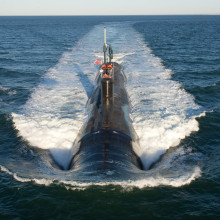
43:25 - Bomb-proof materials
Bomb-proof materials
with Dr Graham McShane, Cambridge University
What can we do to stop explosives from causing injury? Cambridge engineer 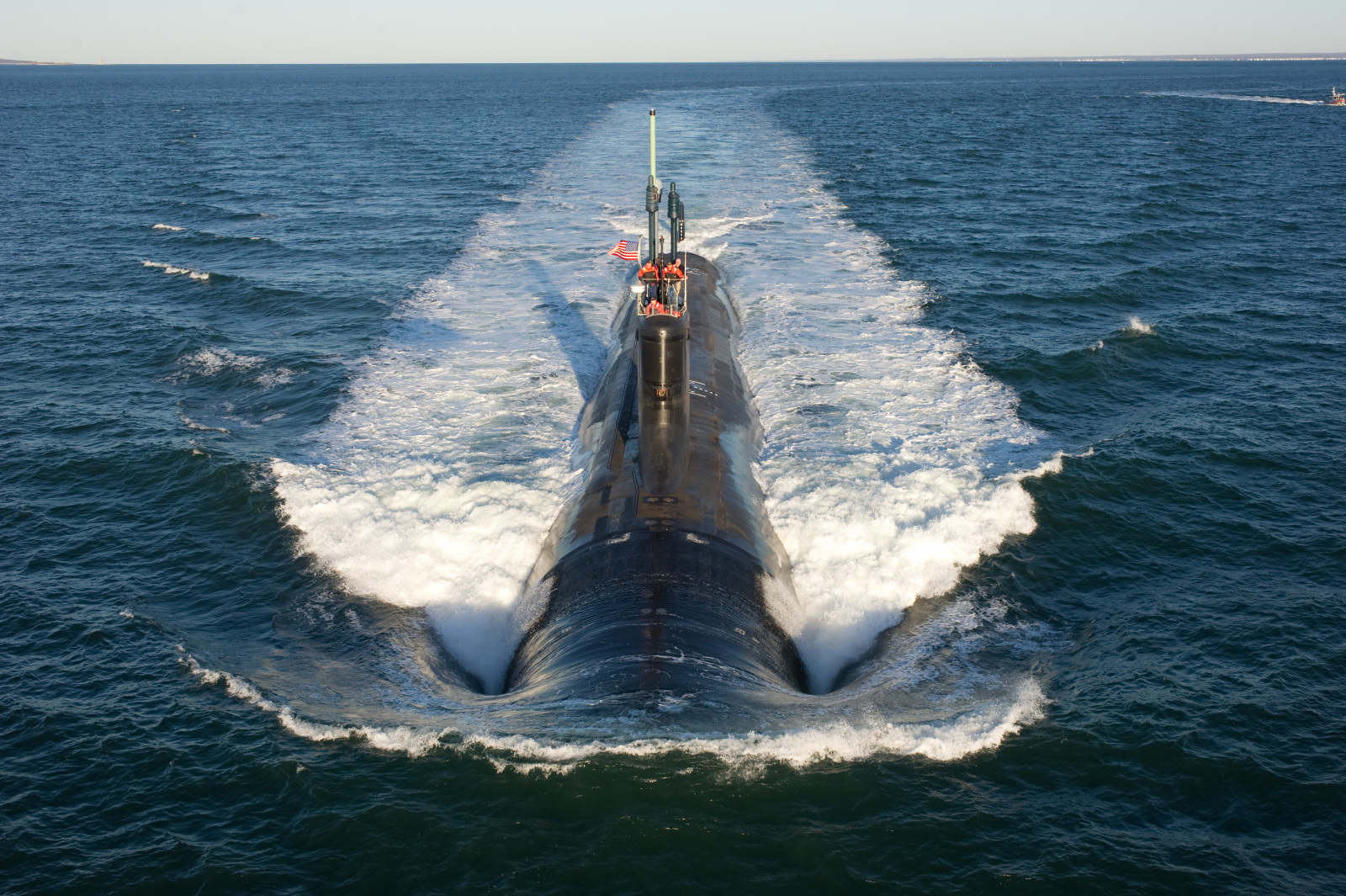 Graham McShane works on materials designed to fend off bomb blasts by dissipating the energy of the explosion. It turns out, the same ideas may even prove useful in contact sports such as American Football, as he told Chris Smith....
Graham McShane works on materials designed to fend off bomb blasts by dissipating the energy of the explosion. It turns out, the same ideas may even prove useful in contact sports such as American Football, as he told Chris Smith....
Graham - So, the key thing in developing protective materials is to control the forces that are transmitted to the object that you're trying to protect. So, when a structure or vehicle is hit by a bomb or a blast loading for example, the pressures can get very high. So, those kind of pressures can cause a lot of damage. They can cause high accelerations of the vehicle which can cause the sort of injuries that Bill Proud was just talking about. So the key for a protective material is to mitigate those pressure loads, those forces that are transmitted to the vehicle. Our research is looking at the use of cellular materials to achieve this.
Chris - When you say 'cellular', can you just explain what that means?
Graham - Examples of a cellular material are foams or honeycombs. So the materials that consist of an array of cells with solid cell walls but largely with air gaps in-between. When you crush the cellular material, they're deformed by the buckling of the cell walls. That buckling helps to dissipate those forces. So the structure that you're trying to protect feels a much lower force over a much longer time period which means less damage and less injury.
Chris - I suppose the automotive industry kind of know this already because cars are designed to have crumple zones, so when you run into a wall, the car crumples up and it takes time for that to happen so all of that force and energy is not transmitted straight into the passengers really quickly.
Graham - It's exactly the same principle, but really, in these cellular structures, we're trying to achieve that at a smaller scale.
Chris - You began with metals to do this for boats and things.
Graham - That's right. We were interested in protecting ships against underwater explosions where the pressures are very high. So we need materials that are going to be extremely strong and be able to absorb very large amounts of energy. That's why we were investigating metallic, steel structures. So we're making honeycombs and corrugated structures out of stainless steel by taking plates of the steel and joining them together by welding and brazing. And putting those inside sandwich structures which have solid face sheets outside these cellular materials and then looking at how they can protect the structure against defects of a blast load.
Chris - Do they work?
Graham - They work very well. So, they're able to absorb a lot of energy, but they're also very efficient structures, these sandwich panels. They're very light and very stiff, so they allow you to reduce the weight of your structure as well. The downside is that they're too difficult to manufacture and they're more expensive.
Chris - Can you take the fact that you've worked out these geometries for these materials to dissipate energy in this way and say, "Well, I'm not going to do it in metal. I'm now going to do it in some new material."
Graham - Absolutely. There are wide range of applications that rely on the same principle. So personal protective equipment where you're trying to protect people's heads or bodies against impact injuries, but the regime of loading is very different - the forces are lower and so on. So you might want to use different materials. This is really where 3D printing is coming into its own. So, we're able to use 3D printing to make these cellular materials in very complex shapes such that they can fit around the body or around the head out of plastics and rubbers, and other softer materials. And we can use the same understanding of how these cellular materials buckle but apply them in these new applications.
Chris - And the connection to American Football League?
Graham - Head injury is a big challenge in many sports. American Football is one, rugby is another where people's heads undergo collisions. People get concussions and that can seriously damage their career or put their health at serious risk. So, there's a huge range of potential applications for these materials in sports.
Chris - So you would take what you're learning in terms of how you're going to mitigate blast to the undersides of Land Rovers, how you're going to mitigate damage to individuals; 3D print rubber materials that could go into say, a hat or a helmet or something; and that could benefit a footballer but could equally well I suppose, find a home on the battlefield.
Graham - Absolutely, but there are a lot of challenges in terms of understanding how these shells of cellular materials deform under impact loads.
Chris - I suppose 3D printing must have revolutionised your work because to knock up those metals, it sounds like that was not trivial, it was trying to do that, but if you can 3D print something, you can do lots and lots of different experiments very, very quickly.
Graham - Exactly, right. So 3D printing gives you a huge flexibility to create a wide range of different geometries out of a wide range of different materials and to produce them very quickly. And so, you can produce one off, you can experiment with different geometries and different designs and it gives us real freedom to explore new solutions.
Chris - Well, things like Alzheimer's disease because of repeated head injury are a big problem in contact sports, so there could be a lot of American football players who have a lot to thank you for in the future, Graham. Thanks very much for coming to talk to us about it. That's Graham McShane; he's an engineer from the University of Cambridge.
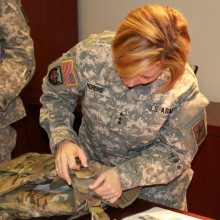
48:16 - Designing better body armour
Designing better body armour
with Adam Healey, University of Surrey
It's not only vehicles that need protection, body armour is a key weapon in the fight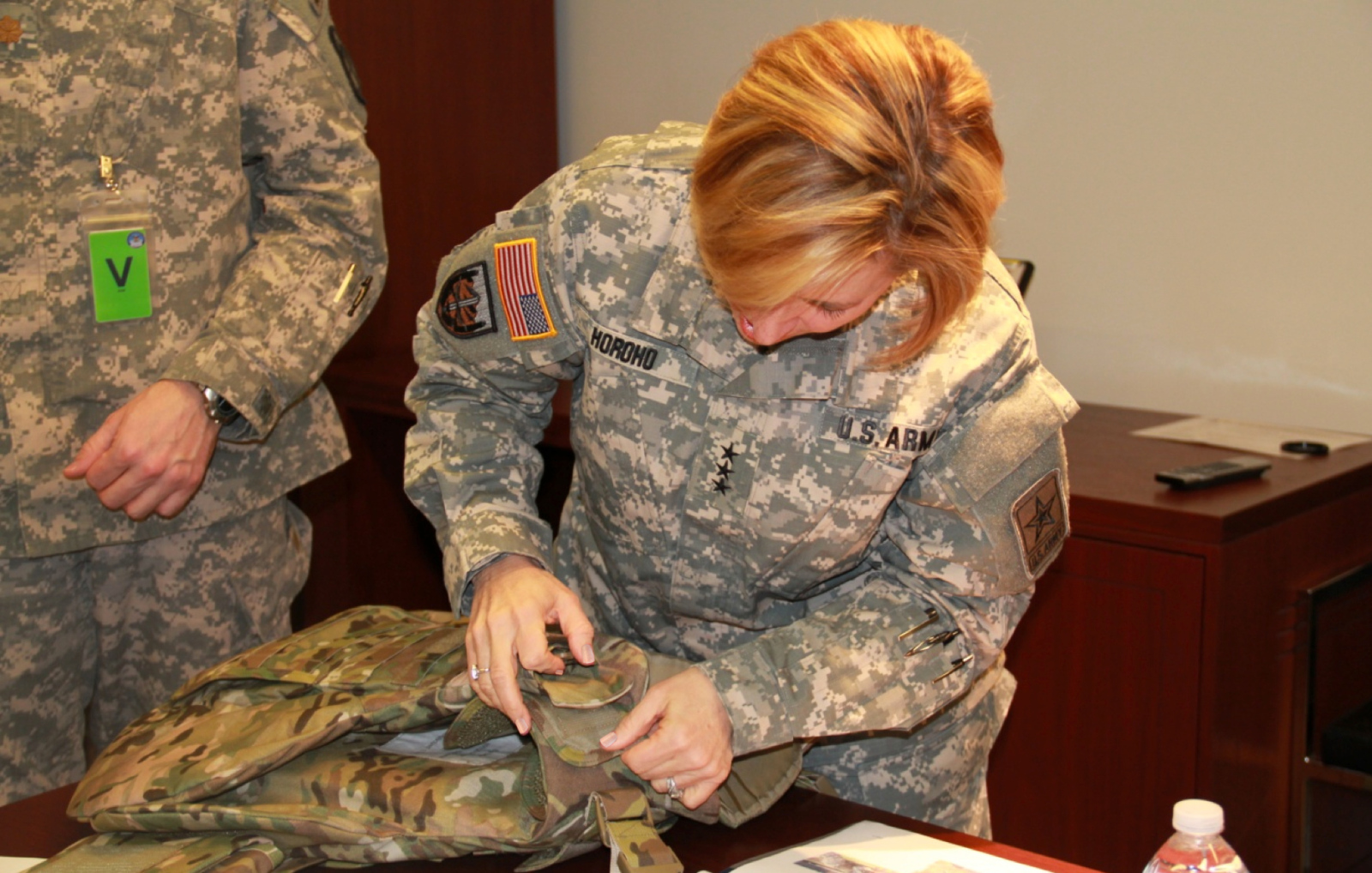 against explosives. It not only has to protect the wearer, but also be lightweight enough to allow them to do their job effectively. This has led to all kinds of creative solutions over the years, from liquid body armour to the use of natural materials such as spider silk. Adam Healey researches this field at the University of Surrey...
against explosives. It not only has to protect the wearer, but also be lightweight enough to allow them to do their job effectively. This has led to all kinds of creative solutions over the years, from liquid body armour to the use of natural materials such as spider silk. Adam Healey researches this field at the University of Surrey...
Kat - What is the kind of body armour that soldiers or police would be wearing nowadays?
Adam - Well, the typical kind of armour you see on troops on the ground, if you consider typical flat jackets they kind of wear, the fabric itself is usually made of things like Kevlar or nylon - very strong fibres. They have pockets in the fronts and the sides and the back into which slot hard plates, designed to stop very high energy impacts like armour piercing, bullets and things like that which are commonly made of a combination of ceramic and composites. There are several advantages that ceramics have over other kind of materials. I mean for example, one of the the main things is weight. Weight for weight ceramics and composite systems are able to stop higher energy impacts than almost any other materials such as metals. It takes a much thicker metal sheet to stop the same kind of burst that ceramics can. It's quite difficult to nail down specific material properties that can be linked to "bulletproofness" if there is such a word. High hardness is commonly used as an indicator in this respect. Although something else that armour development is constantly trying to improve is costs. We could try and armour all soldiers with diamond if we could, but it's very, very expensive.
Kat - It would be really blinging though.
Adam - I'm not sure that's a primary concern but yes, it would.
Kat - Maybe not. So, tell me about the kind of work you're doing. You work with ceramics. Whats working in their structure to make them protective against high impacts?
Adam - The way a common ceramic armour system works is a sheet of ceramic and a sheet of composite. The job of the ceramic is to destroy the bullet and the job of the composite is to catch all the bits that are left. The ceramic does it in a variety of different ways. It's very hard so the bullet is fractured against it. As it breaks, it starts eroding the bullet as it pushes through the system. Fragments fly off, they take energy with them and we're examining the fragmentation and trying to work out what's actually happened. Like, how have these fragments formed. Normally, when you shoot something, the fragments end up behind the gun that shot it, it will go all over the range. But I've been using different methods to catch all the fragments and I've been trying to characterise these fragments and also, look for similarities between what's happened to fragments generated from ballistic events and fragments generated from other tests that are available to us.
Kat - So, you're kind of trying to put all these information together to work out almost a prediction of how materials would respond?
Adam - Pretty much, yes. It's a very large, vast and difficult jigsaw.
Kat - I can imagine that. Where are the ceramics of the future heading in this kind of body armour?
Adam - Well, what a lot of people are working towards at the moment are ceramic composites. They've got a solid plate of ceramic and they have different particles in here that change the way the ceramic behaves under impact. Like it might change the direction of cracks or generate fragments in different ways which will have an effect on how balistically powerful a material is. Or even materials which have a change, even down at like an atomic level that changes the behaviour of the ceramic under high magnitude impact.
Kat - I was going to say, we just heard Graham talking about the issues of flexibility and the kind of ways that he's structuring the materials that he's working on. I mean, with ceramics presumably, they're very hard and not very flexible.
Adam - Yes, that's true. Sometimes you hear of soldiers just foregoing those hard armour plates altogether, just taking them out of the flat jacket. Sometimes people try to develop new ceramic plates which are actually made up of loads of little plates like in a mosaic pattern. But they're not as balistically strong as like a solid ceramic sheet.
Kat - So, it's always going to be a toss-up between the flexibility you need and the strength, the hardness to withstand those kind of impacts.
Adam - It is the kind of areas that body armour development is trying to improve on.
Kat - We've heard about some new ideas in body armour. There's an idea of liquid body armour. I mean, what would that be about?
Adam - I take these kind of developments with a pinch of salt because I haven't found any academic papers on them. But the way it works is that the molecules in these liquids they rearrange under high impact and they stiffen up. My current understanding is that it can't harden quick enough or strong enough to stop bullets. It's mainly used to treat Kevlar vests to increase their stab resistance.
Kat - What about using the natural world as a source of inspiration to inform us about the development of body armour?
Adam - Biomimetic armour which is inspired from structures found in nature is a very very exciting subject. A very interesting paper I read looked at mantis shrimp, they scuttle around, do their thing and basically spend their entire life punching crabs to death.
Kat - Okay, they're strong.
Adam - You can imagine the kind of power behind the clubs that they use to do this and the incessant impacts that they had to do over and over again their entire lives. The materials involved in making these clubs must be very excellent at absorbing impacts. So some people look into how they do that and seeing whether it can be transmitted into armour applications.
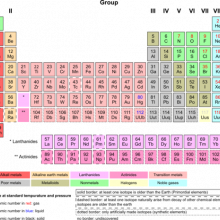
53:33 - What is the most expensive element on Earth?
What is the most expensive element on Earth?
Graihagh Jackson put John's question to chemist Mark Lorch, from the University of Hull...
Mark - Plenty of materials are extremely expensive. There are drugs such as soloris which costs a whopping $700,000 for a year's treatment. There are chemicals that have high social costs through drug abuse or pollution. But strictly speaking, none of these are elements. They're mixtures of elements bound together known as molecules or minerals.
Graihagh - Ahh, so they're not strictly elements. That narrows down our search just a little. So, we're clear though. What exactly is an element, Mark?
Mark - Elements themselves are something that can't be chemically broken down into a simpler substance. Of course, they're all nicely laid out on the periodic table or indeed in song. There's antimony, arsenic, aluminium, selenium, and hydrogen and oxygen, and nitrogen and uranium, etc. So, being a chemist, I'm going to use that definition of an element.
Graihagh - Okay, so we're looking for an element, but what do we mean when we say expensive?
Mark - Well, we can't live without oxygen or carbon or a host of other elements which makes them invaluable. But to make things slightly simpler, I think I'll stick to purely monetary values.
Graihagh - Let the fight begin.Weighing in at just 12 on the atomic mass scale, it's lightweight underdog, carbon.
Mark - It might cost pennies when it's graphite in your pencil, but turn it into the best diamonds and it might fetch $100,000 for a gram.
Graihagh - That is a hefty price tag! What else is a contender?
Mark - Astatine - it's radioactive. The half-life of a few hours and so, it decays as quickly as it's produced. The result is that there's probably less than 10 grams of naturally occurring astatine on the whole of the earth. But astatine still isn't the rarest member of the periodic table, not if we take into account man-made elements. That accolade probably goes to livermorium, made by bombarding heavy atoms together causing them to briefly fuse into the new element. Only a handful of atoms have ever existed and with the half-life of 61 milliseconds, they don't hang around for very long either. But whilst these are fabulously expensive to manufacture, there's no commercial reason to do so.
Graihagh - What does that leave us with as our champion?
Mark - It's another man-made element but a useful one. With applications ranging from initiating nuclear reactors to radio therapy treatments for some cancers, but it doesn't come cheap. You also need to set aside a cool $27 million for just 1 gram.
Graihagh - And the winner by knockout is californium!









Comments
Add a comment